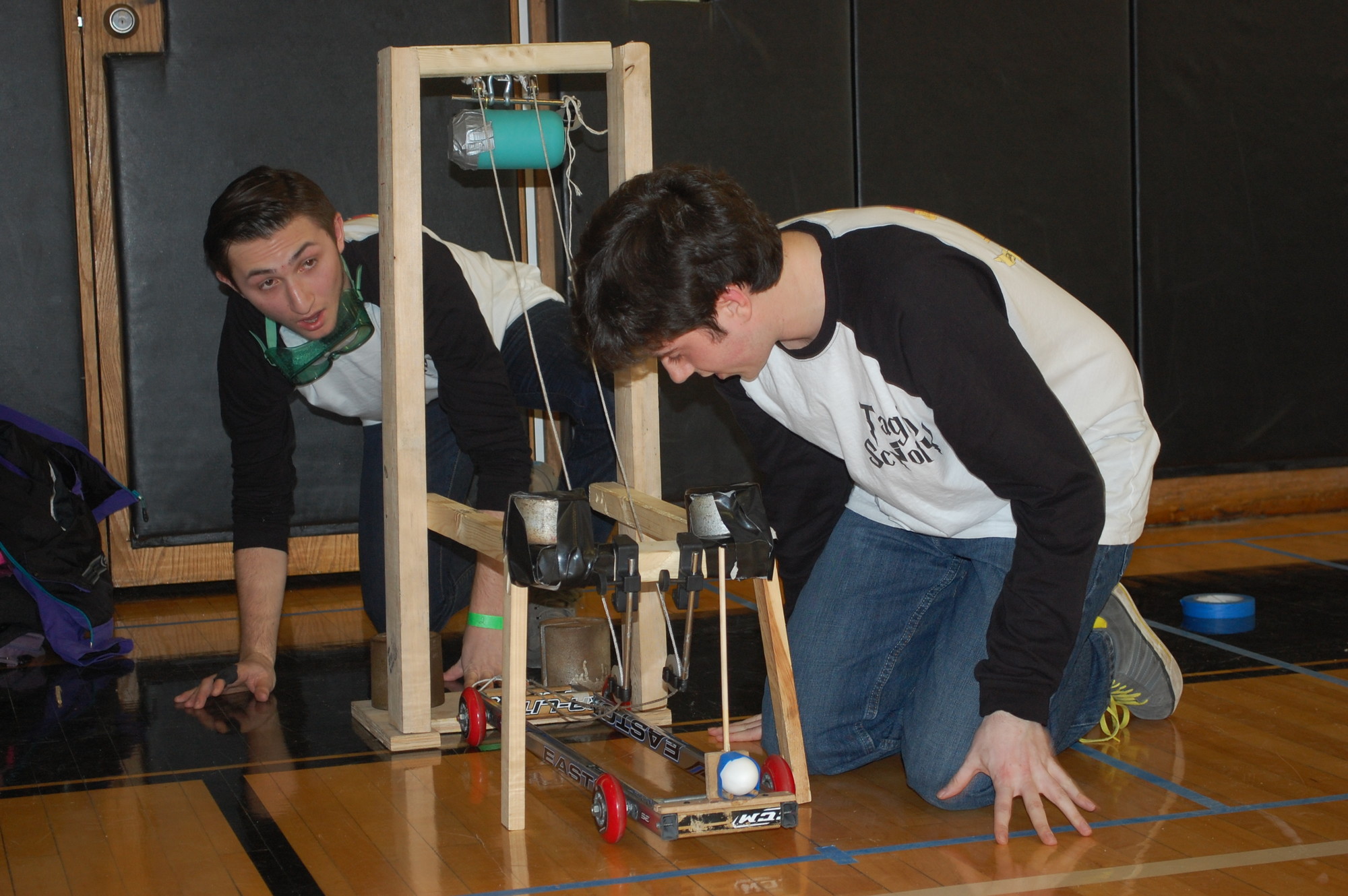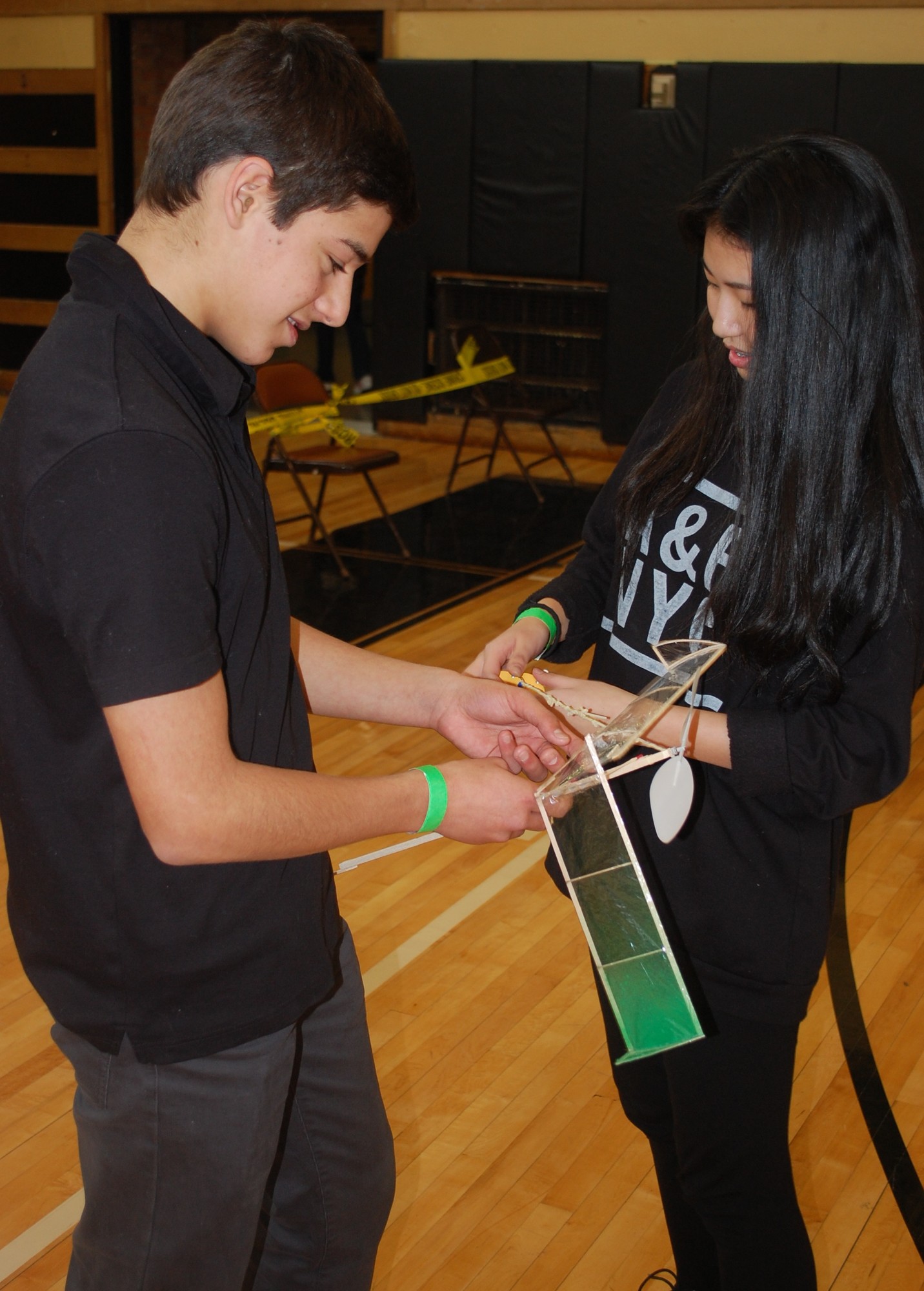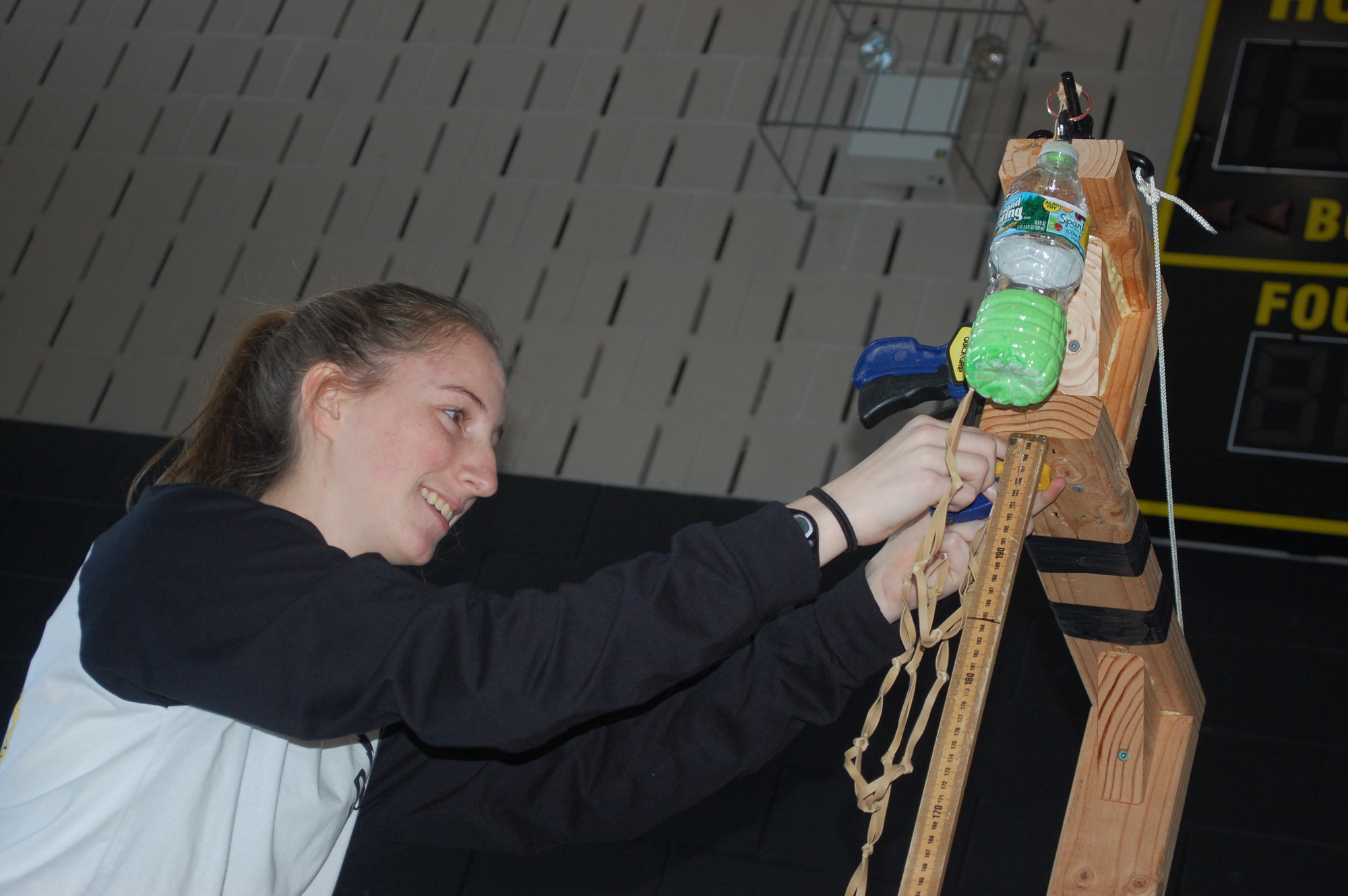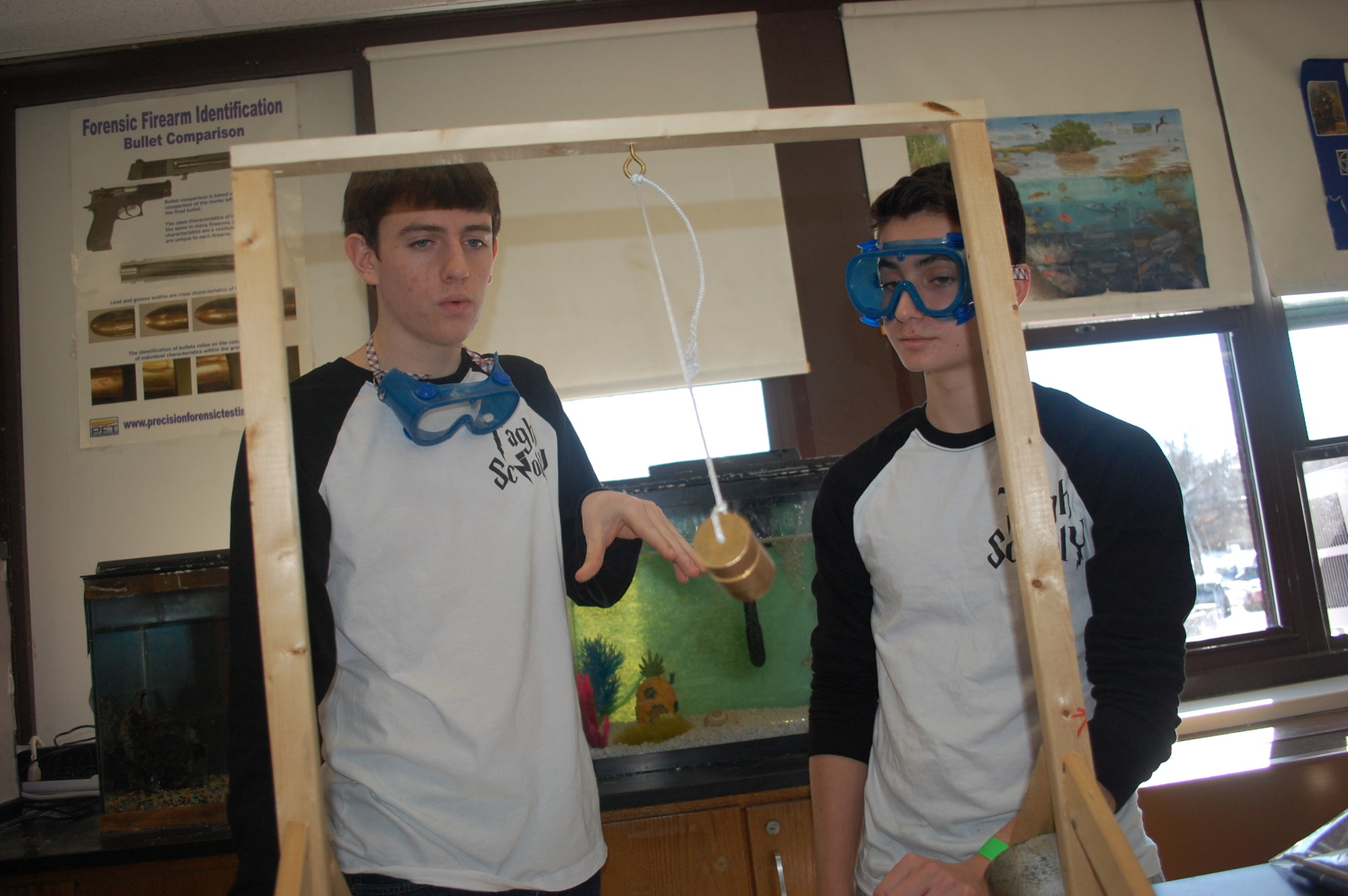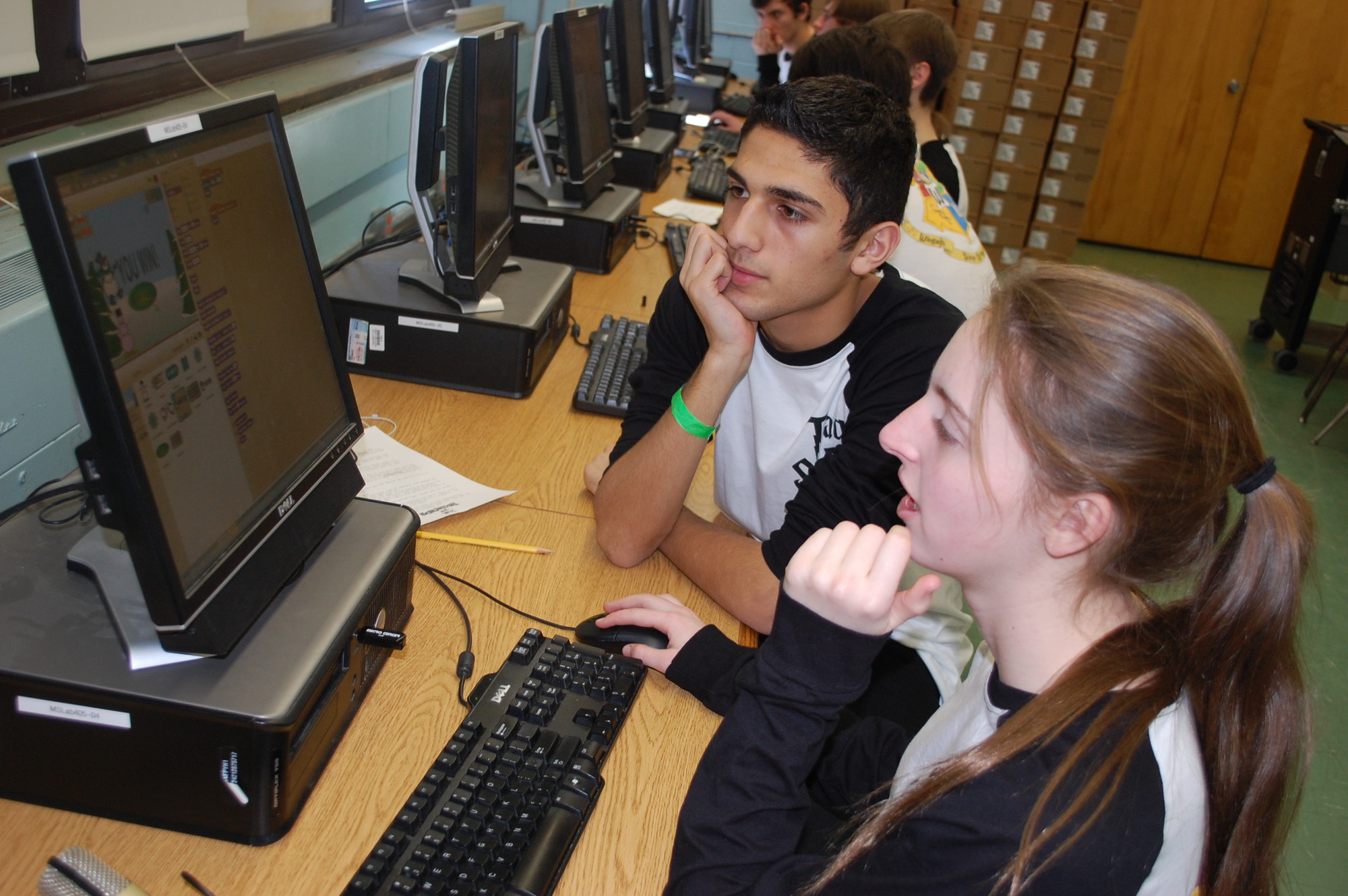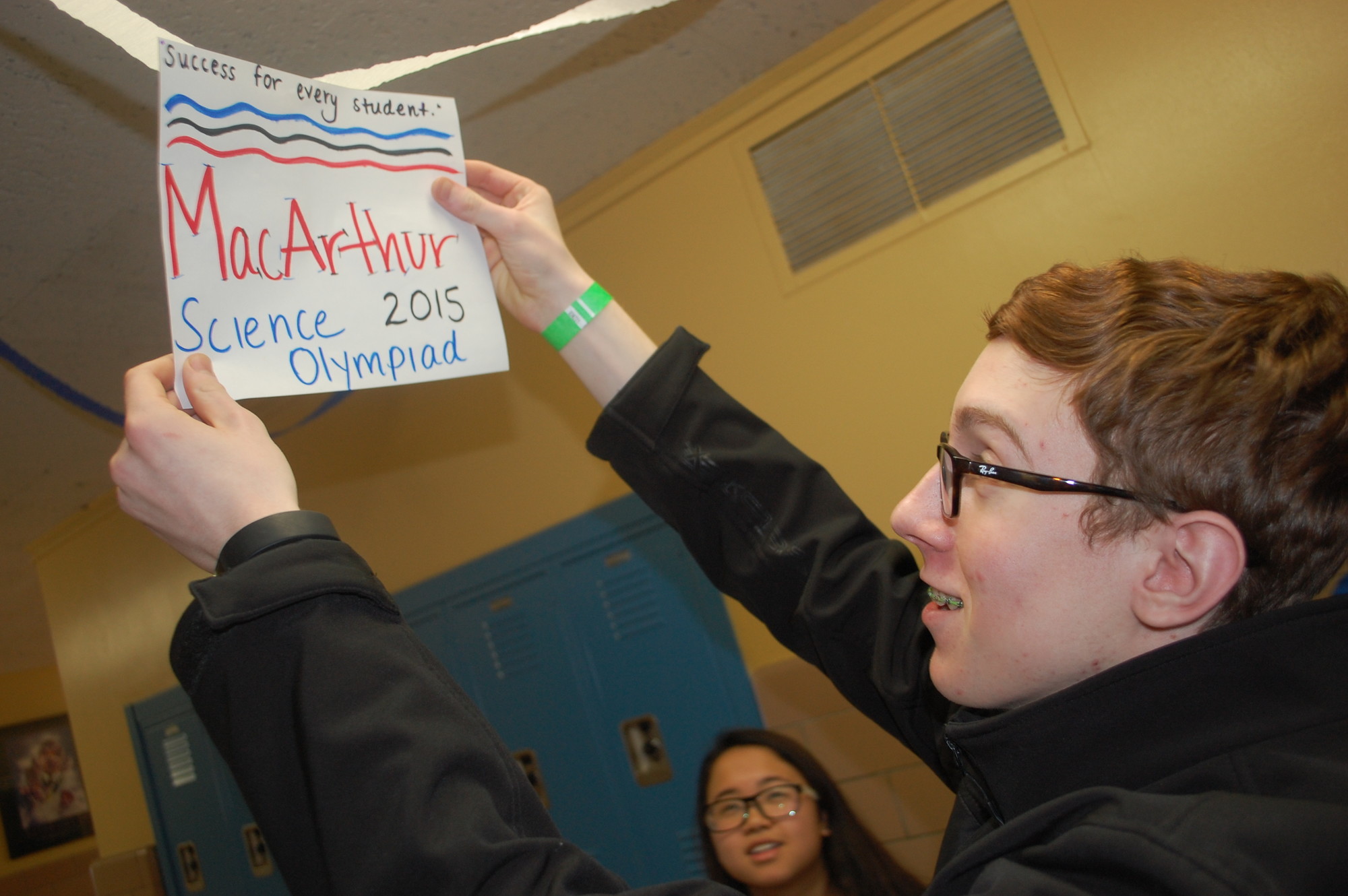A scientific revolution in Wantagh
High School hosts Science Olympiad regional competition
See more photos from the competition here.
More than 600 science-minded teenagers converged on Wantagh High School last Saturday for the annual Science Olympiad regional competition, putting their minds to the test on topics ranging from biology to engineering.
The competition featured 20 different events. There were 43 teams from 22 high schools in eastern Nassau County, including Wantagh and MacArthur. It was Wantagh’s first time hosting the Science Olympiad. “It really has been smooth,” said Rich Colavita, the Olympiad adviser who, in addition to preparing his Wantagh students for their events, had to organize the competition. “It’s a testament to how hard everyone has prepared for this.”
Colavita had the help of the high school’s entire Science Department, as well as the advisers from other schools who supervised events. As guests walked in through the front doors, they were immediately met with the bridge-building competition. Students built their wooden bridges in advance. For the event, a bucket was attached to each entry, and sand was added until it gave way.
Wantagh students Brian Tretter and Peter Albanese built a bridge that withstood 15 kilograms of sand. “I’m pretty happy,” Albanese said. “In testing it, it held pretty well.”
The top six teams overall will now be invited to the state competition. Wantagh had three teams, each with 15 students, compete on Jan. 31, and its A team finished second overall, behind Syosset. This will be Wantagh’s third consecutive trip to states, and seventh overall, in the program’s 15-year history at the school.
Wantagh students were all wearing white shirts with black sleeves. The design, based on “Harry Potter,” incorporated the team’s name, Tagh SciOly.
Chris Mountanos and Marissa Polack finished first in “Game On,” a new computer-based event. Each pair had one hour to design a video game, based on a snow theme. The games were then sent to the library, where a team of judges looked over each one, and used criteria determined by the state Science Olympiad committee to grade each one on a 100-point scale.

